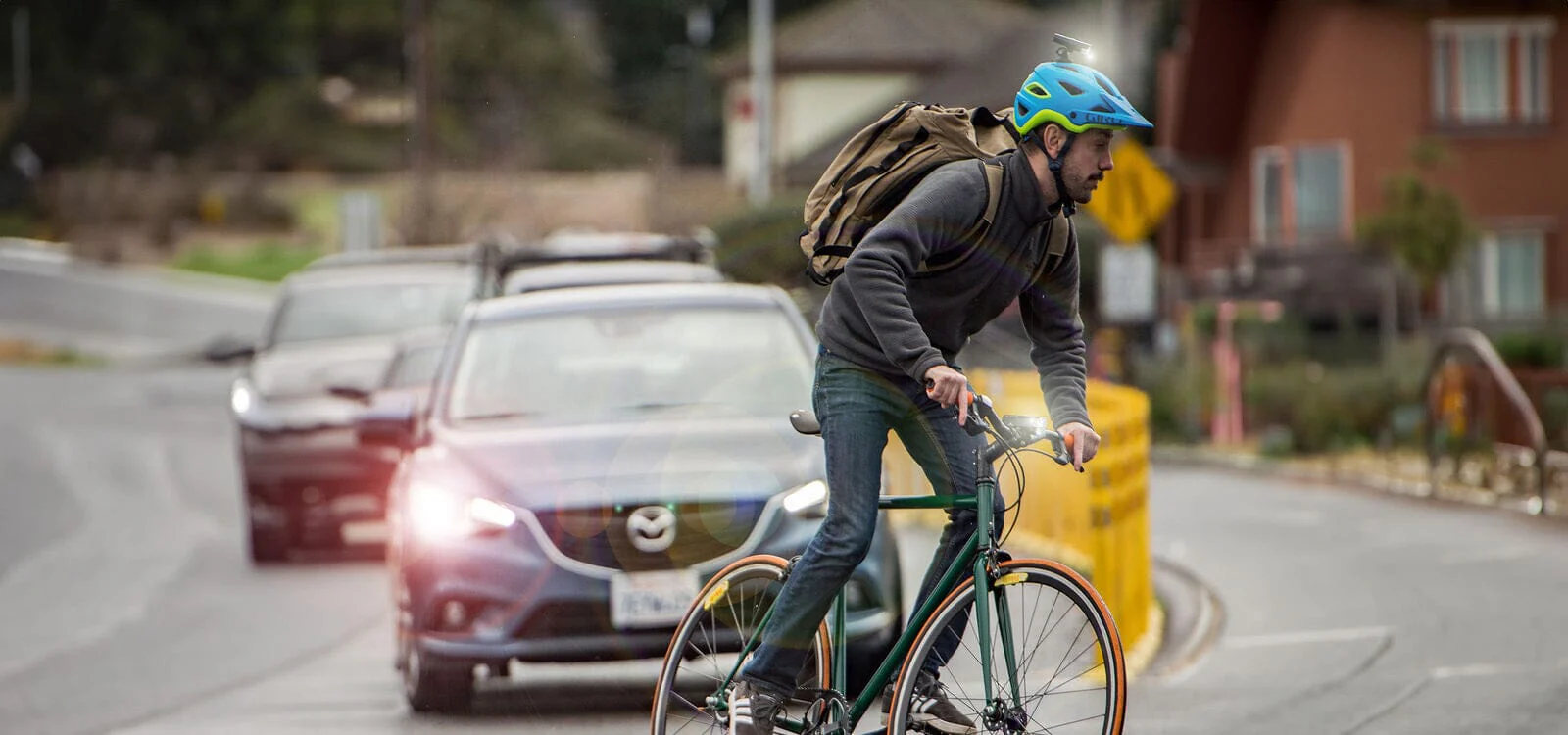
Daylight Riding - Be Seen to Be Safe!
It’s officially autumn! It happens every year and no matter where you are it definitely shifts riding season into a different gear. Even if the weather and temperatures stay more ride-friendly, we all deal with the daylight hours getting shorter as we wander away from the sun for a few months. We’re apt to start squeezing in as much daytime riding as possible. With that in mind it’s a great time to look into how best to be seen while riding, no matter the time of year. Visibility is paramount to riding safely and it’s well worth the effort.

Don't Assume Visibility
Automobile-related cyclist incidents are on the rise, and these incidents are most often related to cyclists simply not being seen. Driver distractions are at an all time high, so it’s our job as cyclists to do everything we can to watch out for ourselves. Fortunately, we have lots of great products and options available to help do just that.
When it comes to visibility on the bike, it’s easy to focus more on being seen when we’re riding at night. It’s natural to assume that we’re easy to see during daylight hours, especially given how much more visually appealing both bikes and bike gear have become over the years. But again, there’s so many more things distracting drivers these days that we can’t count on simply “looking great” to make drivers aware we’re there. We need to emphasize that point.

Look Loud
As mentioned, “high-vis” options abound and it’s key to incorporate as many highly visible items and colors into your kit as possible. The more the better, but if you do it right it doesn’t take much to be easily seen. For daytime visibility, fluorescent colors work best, with fluorescent yellow and orange topping the list of what’s most effective. Some “dayglow-adverse” or more fashion forward riders might argue that white (or other bright colored) clothing, helmets, etc are as effective as fluorescent colors, but it’s scientifically not the case. There’s good reason that safety regulators and governing bodies universally require fluorescent colors for vests, hardhats and outerwear.

Fluorescent colors work by converting UV light in sunlight to something we can easily see so they’re bright in daylight conditions. Fluorescent colors are of a wavelength that reflects up to 300% of a color in the spectrum, compared with conventional colors which can only reflect up to about 90%. White is actually not present on the visible spectrum of light waves, rather white is what we see when all wavelengths of light are reflected off an object. In other words, white can more easily blend into the colors surrounding it as opposed to fluorescent color’s ability to stand out, no matter the environment, as long as light is available. Things change once the sun goes away, but the bottom line is that fluorescent colors are the way to go as far as what to wear to be seen during the day. Don’t assume you naturally stand out!

Light It Up!
In addition to integrating some high-vis threads into your setup, what else can you do to make sure you’re extra visible during the day? The answer is pretty simple, and if you spend any time riding at night chances are you’re already set: That’s right, lights and more specifically, blinking lights.
It’s easy to assume that we’re easy to see on the bike during the day, especially if you’ve added a fluorescent helmet, clothing, etc. but the fact is that as cyclist become more and more common on the roadways we also tend to start blending in, and drift further “off the radar” for many motorists. Drivers also don’t often *expect* to see cyclists, so visibility vigilance is paramount.

Adding lights to your daytime riding routine is easy and cost effective, as well as literally effective. Check this out: a recent NIH study of nearly 4000 cyclists found that riders using daylight-visible lights on their bikes had a 33% lower crash rate than a control group without lights. A 2013 Danish study in Accident Analysis & Prevention also found cyclists who use flashing daytime lights had 47% fewer collisions with other road users. It’s hard to argue with numbers like that, so it’s an understatement to say that we recommend adding flashing lights to your daytime setup! It's also worth noting that a further study found that most cyclists believe that they are visible at more than twice the distance estimated by a driver. Using a light that grabs driver’s attention can definitely help reduce that gap.
Ride Safe, Ride Sound
Safety of course extends beyond being visible, and it’s up to us as cyclists to “ride the part”, as it were. Following the rules of the road, being courteous and conscious of motorists and generally just riding smart will go a long way towards keeping you safe on the bike. Doing everything you can to be seen can also help you ride more confidently, and increased confidence along with being vigilant and aware will undoubtedly improve your ride.
Do you need to add some visibility to your ride? Give us a call, swing into the shop or hit us up on the chat. We want you to be as safe as possible and we’re happy to help get you set up!
Great summary, especially presenting the data to back up the intuition and anecdotal experience many of us have. Many cyclists and clothing vendors seem to forget the wear-bright-clothes mantra when it comes to cold-weather gear. Especially in the dark days and sketchy road conditions that accompany our Utah winters, our jackets and tights/knickers have to be bright. Black is beautiful but not as the color of cycling outerwear!
Rob MacLeod on
Thanks Jon, glad you enjoyed it! Stay safe out there!
Ed K on
Very good article about bike safety that explained things intelligently. Well done!
Jon on